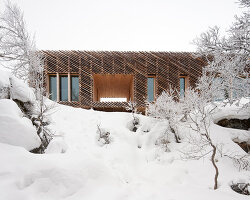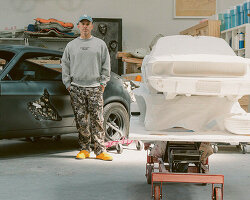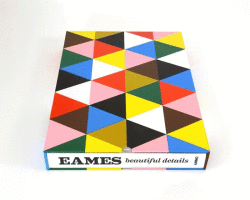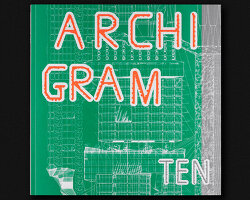KEEP UP WITH OUR DAILY AND WEEKLY NEWSLETTERS
explore the series of high-tech toys and devices designed with modern features for adults.
its external body features abstract semi-circles in white and gray over a warm gray base, subtly evoking the ripples and waves of flowing water.
connections: +430
designboom interviews chief design officer gorden wagener to discuss the ‘frunk’, AI agents that detect the driver’s moods, and more.
a real-life model of the two-wheeler appears at honda welcome plaza aoyama in tokyo, japan in march 2025.
connections: +550

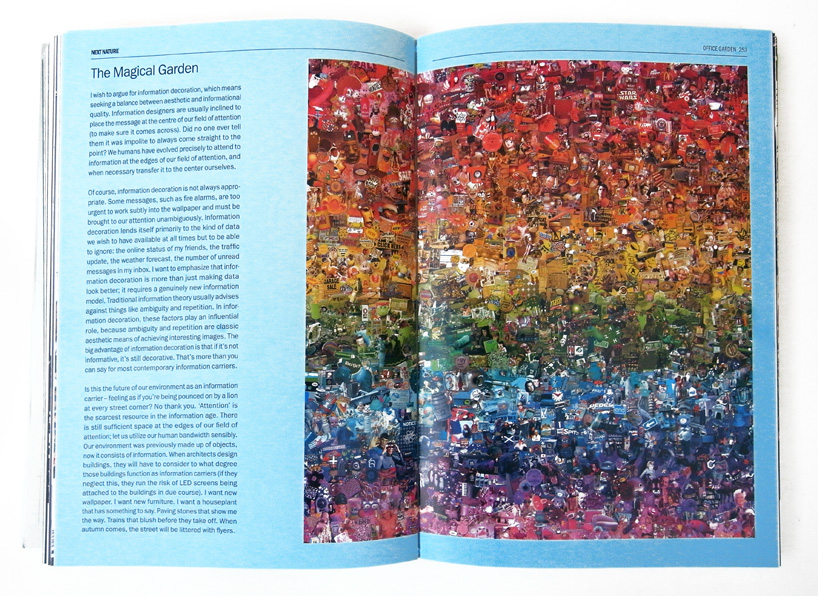 this photographic compilation investigates the aesthetics of information
this photographic compilation investigates the aesthetics of information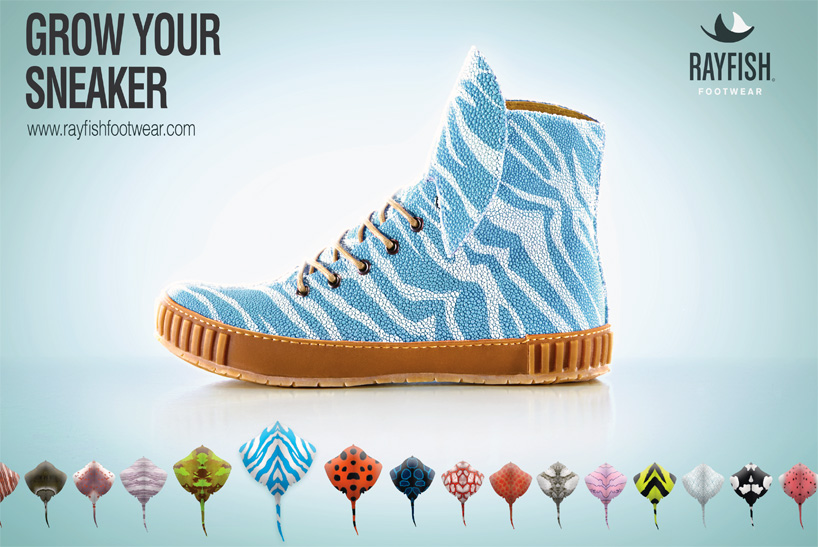 ‘rayfish footwear’, one of the ‘infotizement’ fictional ads in the book, has recently caused controversy online; read more about the company’s claims to breed
‘rayfish footwear’, one of the ‘infotizement’ fictional ads in the book, has recently caused controversy online; read more about the company’s claims to breed 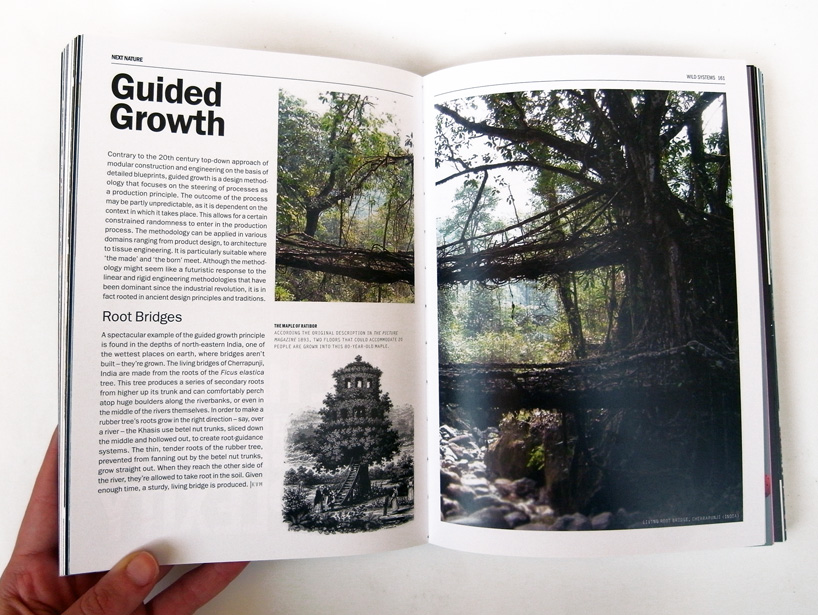 in illustrated short essays, ‘next nature’ provides a historical context to present-day innovation
in illustrated short essays, ‘next nature’ provides a historical context to present-day innovation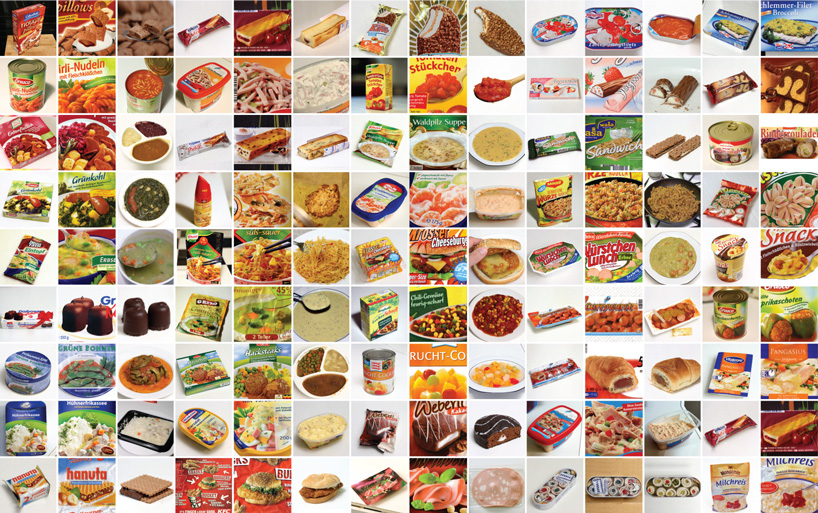 ‘we consume illusions’: we used to be able to identify food by its colour, feel, and smell. our meals needed no packaging. now, even bananas come branded and wrapped in cellophane. many marketing claims are just as artificial– wholesome, all-natural, farm-fresh. if it’s true that we eat with our eyes first, then what we eat are ads.’ – p. 282-283
‘we consume illusions’: we used to be able to identify food by its colour, feel, and smell. our meals needed no packaging. now, even bananas come branded and wrapped in cellophane. many marketing claims are just as artificial– wholesome, all-natural, farm-fresh. if it’s true that we eat with our eyes first, then what we eat are ads.’ – p. 282-283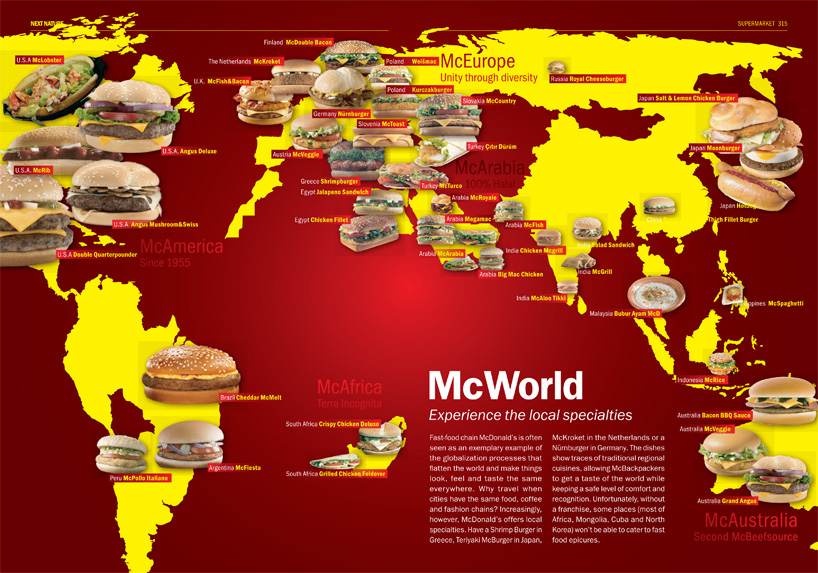 infographics are among the range of visual data conveyed in the book
infographics are among the range of visual data conveyed in the book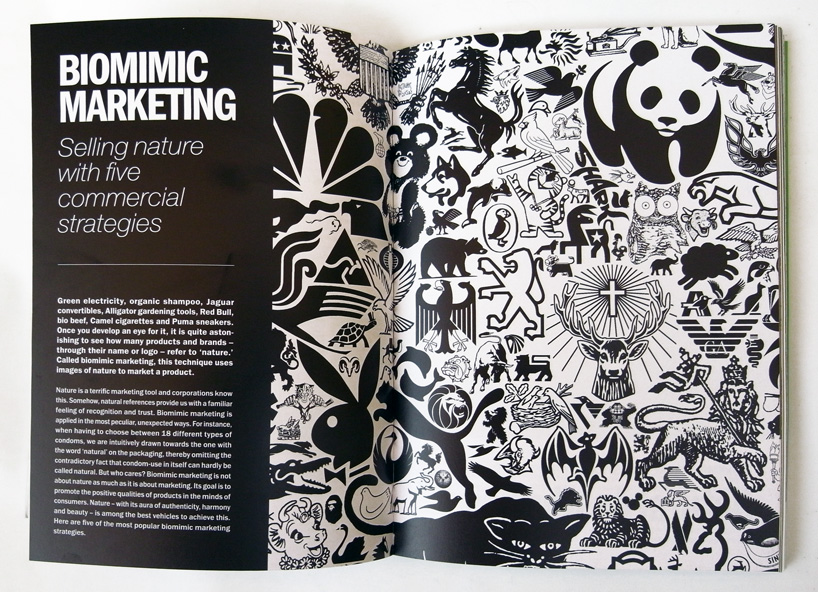 useful to both designers and informed consumers, two photographic essay series document the use of biomimicry marketing strategies and guidelines for anthropomorphic product design
useful to both designers and informed consumers, two photographic essay series document the use of biomimicry marketing strategies and guidelines for anthropomorphic product design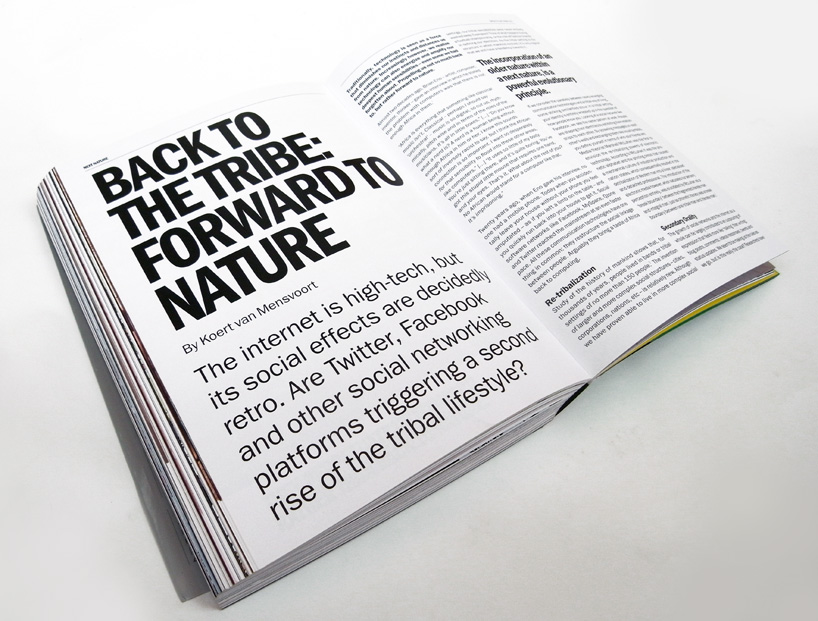
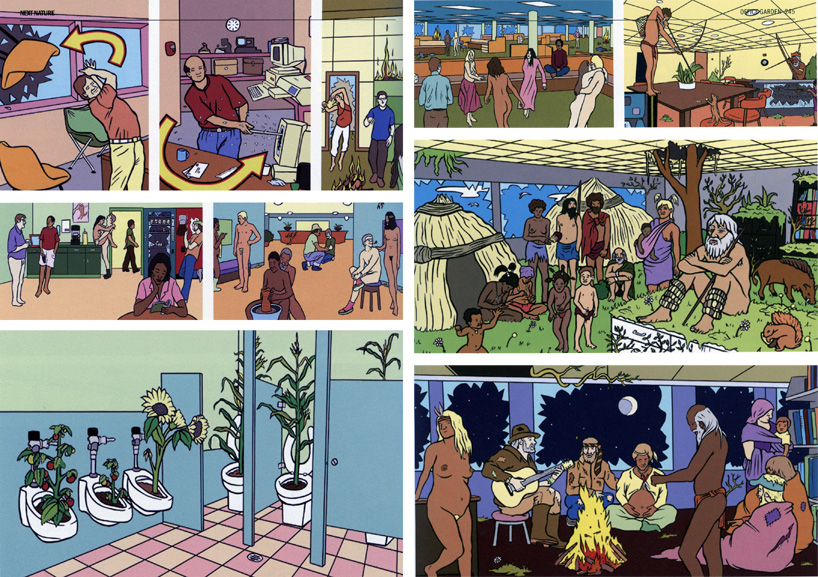 ‘office rebellion’ comic by packard jennings – p. 242-245
‘office rebellion’ comic by packard jennings – p. 242-245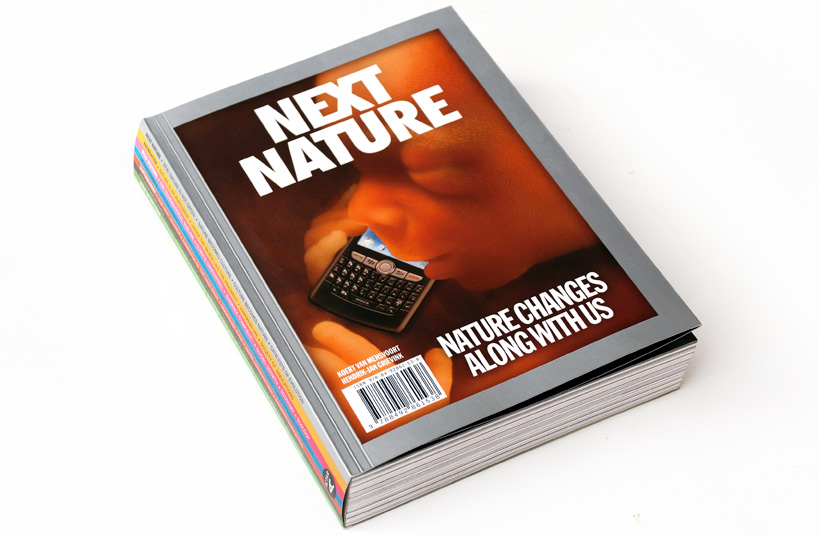 front cover
front cover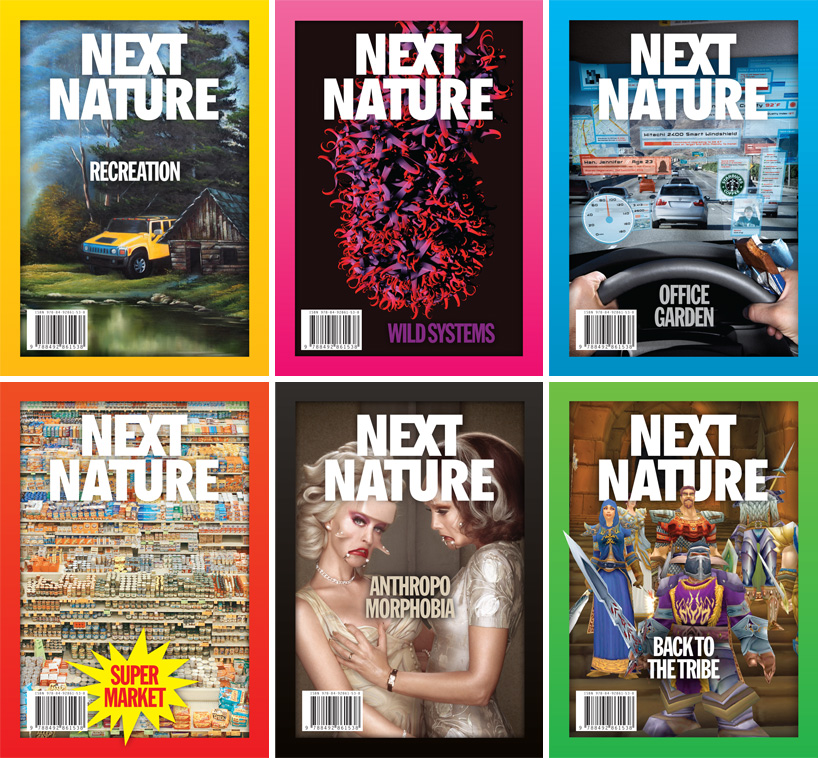 six ‘magazines’ bound together into a single book comprise the chapters of ‘next nature’
six ‘magazines’ bound together into a single book comprise the chapters of ‘next nature’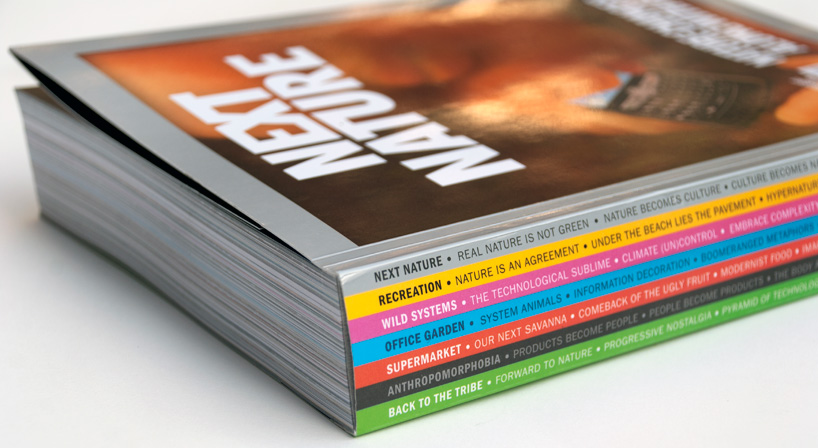 the book’s spine reflects the six fictional ‘magazine’ chapters stacked within
the book’s spine reflects the six fictional ‘magazine’ chapters stacked within